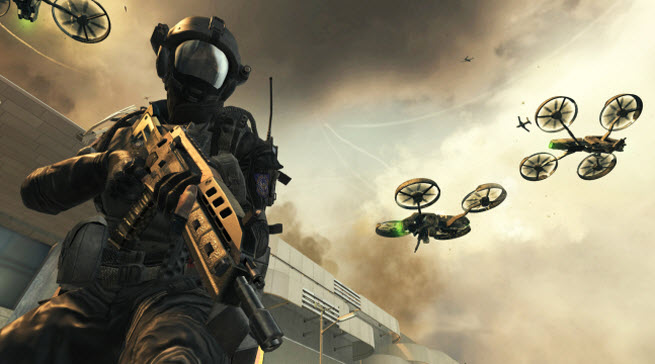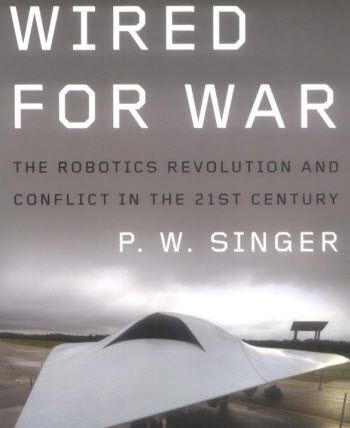[Editor’s note: This article contains a few story spoilers.]
 Activision Blizzard‘s Treyarch game studio is unveiling the worst-kept secret in video games today: Call of Duty: Black Ops II. But the unusual storyline of the first-person shooter and its heavy use of advanced technology, such as drones and robot-mechs, may surprise hardcore gamers.
Activision Blizzard‘s Treyarch game studio is unveiling the worst-kept secret in video games today: Call of Duty: Black Ops II. But the unusual storyline of the first-person shooter and its heavy use of advanced technology, such as drones and robot-mechs, may surprise hardcore gamers.
With Black Ops II, Treyarch wants to deliver something unexpected with new twists in the fiction and a setting that takes place both in the 1980s and in the near-future of 2025 in the midst of a “second Cold War” that is about to turn hot. But the game isn’t science fiction. Mark Lamia, studio head at Treyarch, said in a briefing at the studio’s Santa Monica, Calif.-based headquarters that the story is rooted in fact.
With the newest revelations, Treyarch is under a high-pressure spotlight. The studio is taking some huge risks that could make or break an unprecedented sales streak for the Call of Duty series, which has become the biggest franchise in the video game industry in terms of annual sales. Each new Call of Duty game is breaking sales records, but Treyarch isn’t taking its 30 million fans for granted.
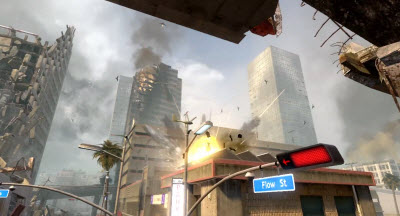 “What we’ve created here is the best-kept secret in gaming because I don’t think it was what anyone was expecting,” Lamia said, speaking in a dark room lit with green floodlights, Call of Duty style. “We realized that with the fiction we created for the first game, we were just scratching the surface. We wanted to take our signature style of working with historical fiction and take it to the next level.”
“What we’ve created here is the best-kept secret in gaming because I don’t think it was what anyone was expecting,” Lamia said, speaking in a dark room lit with green floodlights, Call of Duty style. “We realized that with the fiction we created for the first game, we were just scratching the surface. We wanted to take our signature style of working with historical fiction and take it to the next level.”
He added, “On every front, the team wanted to push the boundaries. We could have done a predictable sequel. But the team wanted to push the boundaries on the campaign, multiplayer, and zombies. It’s exciting to be in that kind of environment. We were energized by the first Black Ops and wanted to carry it forward. We are being very ambitious.”
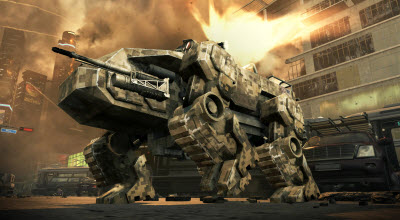 A taste of Black Ops II story and combat
A taste of Black Ops II story and combat
The point of setting the game in the 1980s is to anchor the narrative in the first Cold War and then take the story forward into a second Cold War, presumably between the U.S. and China (although, Treyarch didn’t exactly say that). The team wanted to make the point that warfare is in the midst of completely changing thanks to the march of technology.
In a preview of the first level of the game, Lamia showed the city of Los Angeles under assault by a fleet of combat drones in the year 2025. You play a Black Ops soldier, David Mason, who is part of an escort for the President of the United States in the evacuated downtown area. The graphics look sharp, and there are a lot more things happening in the scene than you usually see in a Call of Duty game. It definitely has a more immersive visual environment. And that’s a reflection of the fact that the team pushed hard to have “PC graphics on a console at 60 frames per second.”
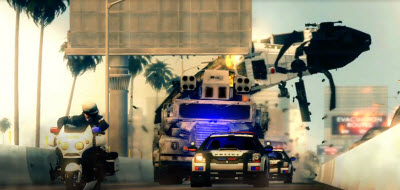 As the drones cause havoc overhead, the president’s armored vehicle gets attacked and flies off a double-decker freeway. Then you have to go into action, shooting drones in the air and terrorists on the ground. Your air cover is an attack helicopter, but it doesn’t last for long.
As the drones cause havoc overhead, the president’s armored vehicle gets attacked and flies off a double-decker freeway. Then you have to go into action, shooting drones in the air and terrorists on the ground. Your air cover is an attack helicopter, but it doesn’t last for long.
You pull out a sniper rifle and get a bid on the enemies. Your scope can see the enemies through the barriers, such as concrete freeway columns. You fire at the enemies, and the projectile appears to go right through the column, taking the enemy out. That’s one hell of a sniper rifle. You can shoot at cars and blow them up with a single shot. A walking tank, called a Cognitive Land Assault Weapon (CLAW, pictured above), comes into view. You have to attack it by shooting out the wheels in its legs. If you hold down the trigger of a gun, you can queue up more projectiles and penetrate deeper, as if it were a “charged shot.”
Once you close with the infantry, you can bring your own quad-rotor friendly unmanned aerial vehicles (UAVs). These drones automatically fire at enemy targets from above, helping you clear through waves of enemies in a short time. You can board a vertical take-off jet fighter and fly through skyscrapers, chasing after the enemy UAVs.
All around you, as far as the eye can see, Los Angeles is in ruins. Dust, smoke, and fires are everywhere. Clearly, the future is going to be very black.
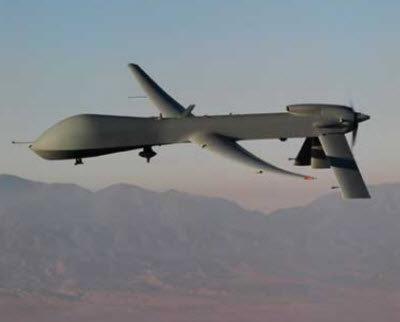 Moving to a plausible near future
Moving to a plausible near future
When you look at that scene, it may bring to mind something like Ghost Recon: Future Soldier (launching at the end of May) or Battlefield 2042. But Lamia contends that it is possible to connect the dots from the modern combat of today to the futuristic weapons. Interestingly, the fictional story of Black Ops does not mesh with the fiction of Call of Duty: Modern Warfare, Lamia said. The narratives are completely separate.
In this Call of Duty, the game’s story has moved on from the 1960s. The cleverness of Black Ops was that its fiction was essentially a reinterpretation of the Cold War. It had scenes that were set in Vietnam using the conventional weapons of the day. But the Black Ops teams had access to experimental weapons that were cool for gamers to use, like Dragon’s Breath shotgun shells that exploded in flames on impact. The Black Ops backdrop allows the team to create cool weapons to play with regardless of the era of the setting.
The new game has some scenes in the 1980s, but it moves on to a near future where a terrorist leader has hacked into America’s military systems and hijacked an entire fleet of drones. The leader, Raul Menendez, sends them to destroy American cities such as Los Angeles and then threatens China, triggering a potential global war that can only be headed off by black operations operatives.
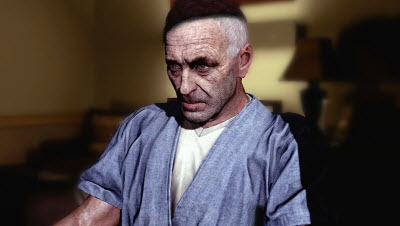 “China and the U.S. are pawns in a larger end game for the villain,” said Dave Anthony, game director at Treyarch.
“China and the U.S. are pawns in a larger end game for the villain,” said Dave Anthony, game director at Treyarch.
The flashpoint for the conflict turns out to be a bid to corner the market on rare earth elements, which are 95-percent controlled by China. If we’ve fought wars for control of oil supplies, then it’s not so crazy to think we would fight for rare earth metals, which are a key part of the electronics food chain and a subject of trade disputes. Those rare earth elements are also the root of all of our military electronics equipment.
The original Black Ops debuted in 2010, and its story borrowed elements from brainwashing-themed movies, such as The Bourne Identity. But it had enough new elements to be more than a knock-off. In fact, the story of the game was its strong suit. The narrative had so many vast conspiracies, hallucinations, and double crosses that you didn’t know what the truth was at the end. It focused on black ops units that developed up with their own weapons, such as a crossbow grenade, and operated behind enemy lines.
Black Ops and other Call of Duty games distinguish themselves by being movie-like in their portrayal of intense combat moments. In the last Black Ops game, you had to jump off a cliff to escape an avalanche. You as the player are put in the most intense situation, and you have to fight your way out of it. But the fans like the series because it also feels real as if you were in the middle of a modern combat battle.
